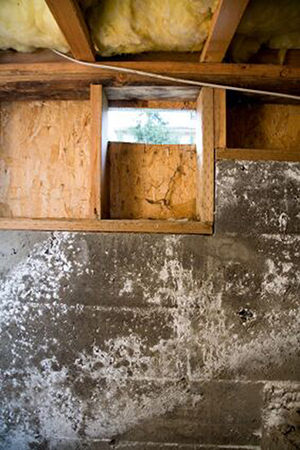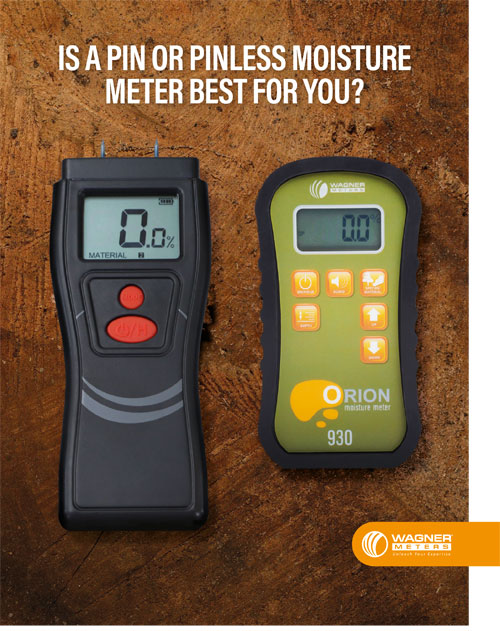How a Moisture Meter Can Help Find Moisture and Mold Growth
The silent intruder in many homes isn’t a tangible thief but an invisible menace: mold. It creeps in, proliferates in damp, dark corners, and wreaks havoc on our homes and health. But there’s a guardian sentinel to this invader: moisture meters.
While they may not directly detect mold, they can undoubtedly alert homeowners to the conditions mold loves most. This guide dives deep into understanding how a moisture meter is your first line of defense against moisture-related issues and potential mold growth.
Join us as we unravel the mysteries of mold and introduce you to the ally that can help keep your living spaces healthy and mold-free.
- Can a Moisture Meter Detect Mold?
- What Are the Warning Signs of Mold?
- The Icky-ness of Mold
- How Mold Happens
- What Causes Moisture in Walls?
- How to Eliminate Mold?
- Is There a Moisture Meter to Test for Mold?
Can a Moisture Meter Detect Mold?
No, a moisture meter can’t detect mold, but moisture meters can accurately detect moisture pockets which might cause mold growth. By using a pinless moisture meter you can check the surface of the area to identify areas with too much moisture.

Moisture meters help detect moisture spots with possible mold growth. If your MC reading in wood is more than 20%, you may want to check these areas for mold growth. When the MC is above 20%, this is possibly where mold growth can start to happen.
Humans have reason to attach negative connotations to mold. When food goes bad, mold appears. When a living space contains too much-unventilated moisture, mold grows. Leaves rot on the ground and form mold. Fabric stored in damp places gets its musty smell from the presence of mold.
More seriously, mold releases chemicals and spores into the air when growing inside a home. Over time, such growth can adversely affect human health. Contrary to public perception, mold has a fairly simple resolution: moisture content (MC) measurement and control.
What Are the Warning Signs of Mold?
Discoloration and the Bleach Test
Discoloration is one of the most apparent signs of a mold issue. Mold can appear in various colors, including black, green, white, orange, and even pink, depending on the type and the surface it grows.
Apply a drop of household bleach to a suspected mold spot for a quick home test. If the stain loses its color or disappears, it could be mold. However, some types of mold will not react to bleach, so it’s not a definitive test.
Musty/earthy smell
Mold has a distinctive, earthy smell often described as musty. If you detect an unusual persistent odor, it may indicate hidden mold. Such an odor can emanate from behind wallpaper, under floorboards, inside walls, and other areas where mold commonly thrives.
Water stains or dampness
Mold loves moisture. Any signs of dampness, such as water stains, peeling paint, or warped walls and floors, may indicate a moisture problem and potential mold growth. If you notice any such signs, it’s important to identify and fix the water source as quickly as possible to prevent further mold growth.
Condensation on Surfaces
Mold spores can thrive in humid environments. Regular condensation on windows, pipes, or walls may suggest higher-than-normal indoor humidity and the potential for mold growth. Keep a check on the humidity levels in your home to deter mold growth.
Visible Growth
In advanced stages, you may see visible mold growth. It can appear as a fuzzy, slimy, or powdery substance and may have a green, black, white, or brown color.
The Icky-ness of Mold
Here are some more basic points on understanding mold:

- Mold’s impact on us is based on where it grows.
- Mold needs moisture to grow.
- Dampness inside building materials can cause mold to grow.
- Mold will not grow on dry materials.
- Mold can begin in environments where no water can be seen.
How Mold Happens
Moisture is present in any building because it is part of our natural environment. Builders construct homes using wood and concrete (among other materials). Both contain moisture within, and a healthy degree of moisture remains inside the building materials.
Professional installers use a moisture meter to measure the MC of their materials during the building process to ensure that safe moisture levels are achieved.
However, moisture meter technology has evolved so that contractors and also consumers can also monitor these building materials on a regular basis to determine if their MC changes.
What Causes Moisture in Walls?
Moisture can migrate through wood and concrete floors, it can leak from plumbing, it is produced by the daily routines of bathing, washing, and cooking. Moisture naturally accumulates in homes, and its excess needs to be ventilated. Although builders seldom deal with mold during construction, homeowners certainly live in perpetual moisture environments in the home and in their workplaces. Moisture imbalance has many potential origins.
Even changes in relative humidity (RH) can influence the building materials MC. When RH is high, materials such as wood absorb water vapor from the air; when RH is low, the same material releases water vapor to try to reach its equilibrium state.
Building materials are interactive with the RH and the temperature of their surrounding environments. This is not to be feared as a problem, but to be embraced as a simple moisture management truth.
Where it becomes a problem is when there is too much unventilated moisture in a specific area leads to mold growth.
If you want more information on how to use a moisture meter on drywall, read our comprehensive guide.

Free Download – Is a Pin or Pinless Moisture Meter Best For You?
How to Eliminate Mold?
You cannot eliminate moisture totally, but you can eliminate moisture problems that can lead to mold. The tonic for being out of balance is being balanced. Building trade professionals use a moisture meter that measures the amount of MC in wood building materials and a moisture test that measures the RH of the concrete slab.
The measured MC for wood and the RH for concrete slabs are displayed in percentage, and quality builders know the moisture targets of their materials for optimum building construction. In essence, they have the tool to stop mold before it even begins to grow.
Professionals monitor moisture conditions through the production and installation of their wood building materials and during the curing of concrete slabs in order to make the best construction decisions for a successful project.
Is There a Moisture Meter to Detect for Mold?
Wagner Meters produces moisture meters and moisture tests for a variety of products – wood, concrete, or multi-material building applications. Using proprietary technology, Wagner Meters’ hand-held wood and building inspection moisture meters quickly scan materials to obtain instant MC measurement results.
Consumers can now purchase their own meter to look for potential moisture problems in their homes that will fit in their utility drawer, and quickly and proactively fix moisture problems before they lead to mold issues.
Moisture will always be with us, but its excess need not produce mold in the modern home. Use a good moisture meter, and maintain the appropriate levels of moisture which deprive mold of its opportunity.
For woodworking enthusiasts and professionals alike, mastering the control of wood moisture content is crucial. Don’t miss our in-depth exploration in ‘Controlling Wood Moisture Content: A Key Factor in Woodworking Success‘ to unlock the secrets of crafting with precision and care.
As Sales Manager for Wagner Meters, Ron has more than 35 years of experience with instrumentation and measurement systems in different industries. In previous positions, he has served as Regional Sales Manager, Product and Projects Manager, and Sales Manager for manufacturers involved in measurement instrumentation.
Last updated on December 12th, 2024




Looking for reliable roofing businesses near me? A well-installed roof protects your home from leaks, weather damage, and energy loss. Make sure to work with companies that offer warranties and have strong customer reviews to guarantee long-term protection and peace of mind.
I’ve had an issue with underground pipe leaks. The first indication was that my cold water came out boiling hot and took up to a minute to get cold. A plumbing company out and said a leak in the hot water pipe was causing it. I live in a condo (just under 700 sq feet). The leak ended up being in a unit in the building behind me. But when they pulled up my water proof laminate flooring to get access, the flooring came up dripping, sopping wet due to cracks in the concrete. My floors were also warm along the whole kitchen and vanity area of my condo. This issue had been going on for months. It also turned out there were cracks in my cement in my entire condo. Restoration company came out with dehumidifiers and dried everything sufficiently to lay new flooring. According to their report, they metered along the bottom of the walls, but no mold inspection was done. My first thought is that it should have been at the top of their list. I also discovered that part of their service is mold inspections and remediation. Was a mold inspection called for?
Hi Gloria,
This is really out of our wheelhouse. I would highly suggest contacting NORMI, https://www.normi.org
I’ve been trying to figure that out too. One website says 20%, still looking around for other websites to confirm
This is a very helpful article. We have found that mold damage is usually the result of hidden moisture. As a mold water damage specialist in South Florida, we often find roof damage is the most common. Once a homes roof is compromising the rain water, soaks into the insulation where is may sit for weeks or even months. It only takes 24-48 hours for mold to start growing. Once that happens your homes walls or ceiling will need to be replaced. My advise is the homeowner need to form the habit of searching for water spots on walls and ceilings on a regular basis.
Can a mold meter detect mold under ceramic tiles in the bathroom?
Zeenat,
You will need to check with the manufacture of the meter to determine its use. Thanks for writing in.
Is there a % on my moisture meter that is when mold will grow inside a wall
Hi Lynn,
Thank you for writing in. Moisture meters do not have a percentage that will show mold. That said, I would go to NWFA.org. They have wonderful information on their site.